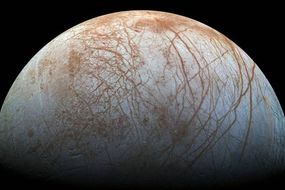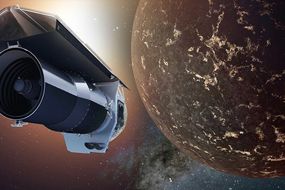Astronomy news: How to see Orion the Hunter at night? Constellation to light up August sky – Express.co.uk
ASTRONOMY enthusiasts across the globe are excited about the arrival of Orion the Hunter – the most beautiful and instantly recognisable constellation to grace the night skies.
Orion the Hunter is visible in both the Northern and Southern Hemisphere, making it a useful tool for navigation. The constellation is well known for its distinctive shape of the mythical Orion holding a club and lion or bow above his head. Orion’s brightest star, Rigel, is the seventh brightest star visible in the night sky. The constellation is also home to the beautiful Orion Nebula, the Running Man Nebula, the Messier 43 nebula and a whole host of other bright stars.
When is Orion the hunter best seen in the night skies?
Orion’s appearance at night varies slightly between the Northern and Southern Hemisphere but the constellation is visible around the globe.
Because of its position, the constellation is often considered a valuable aid in celestial navigation.
In the Northern Hemisphere, Orion is best seen from around autumn until the end of spring.
In the summer months, between May and July, Orion is not visible because it appears during the daytime.
But starting around the end of August and start of September, the Hunter once again enters the night skies.
In the Southern Hemisphere, Orion is best seen during the summer months, which correspond to winter north of the equator.
READ MORE: Top 5 astronomy events you can’t miss this year – eclipses to meteor showers
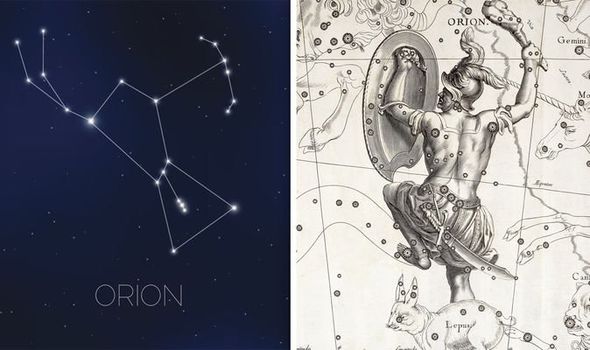
Astronomy: Orion the Hunter is the most recognisable constellation at night (Image: GETTY)
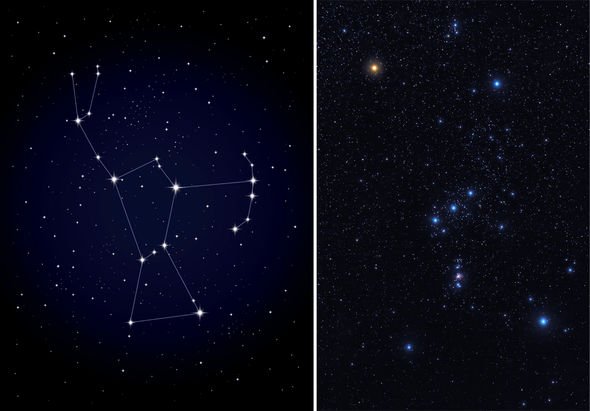
Astronomy: Orion the Hunter’s brightest and most prominent stars at night (right) (Image: GETTY)
How to spot Orion the Hunter at night:
When viewed from London in the UK, the constellation should be visible in the west-southwest skies.
In the southern half of the globe, the opposite is true – Orion appears to stand on his head in the west to west-northwest skies.
Orion is one of the first constellations you should learn to recognise
In her 2019 book, The Art of Urban Astronomy: A Guide to Stargazing Wherever You Are, author Abigail Beall gave some tips on how to best locate Orion.
She wrote: “Orion is one of the first constellations you should learn to recognise because it can be a useful one for star hopping to other constellations.
“It is also bright enough that it can be spotted in the muffle of a city on a clear night, even if just the belt is visible.
“Not only that but if you grab a pair of binoculars you can reveal Orion is also home to some incredible nebulae, which can be a great first target for deep-sky observation and even astrophotography.”
READ MORE: Meteor showers 2019: How many meteor showers are there this year?
There are 14 stars in total that, when linked together, form the shape of Orion the Hunter.
Orion’s most prominent stars, going clockwise, are Rigel in the bottom right corner, Saith, Orion’s Belt, Betelgeuse, Bellatrix and the Orion Nebula M42.
Orion’s belt is made up of the stars Alnitak, Alnilam and Mintaka.
Betelgeuse is found in the Hunter’s left shoulder and glows with a characteristic red glow.
Rigel at the Hunter’s right foot, on the other hand, glows with a bright blue hue.
READ MORE: NASA’s Hubble telescope just snapped the BIGGEST fireworks in the galaxy
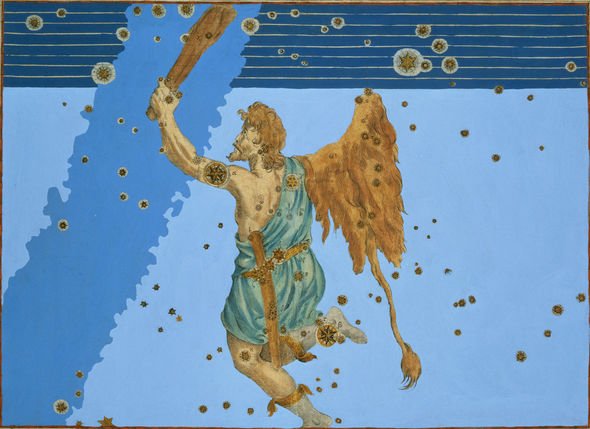
Astronomy: Orion represents the mythical Greek hunter Orion (Image: GETTY)
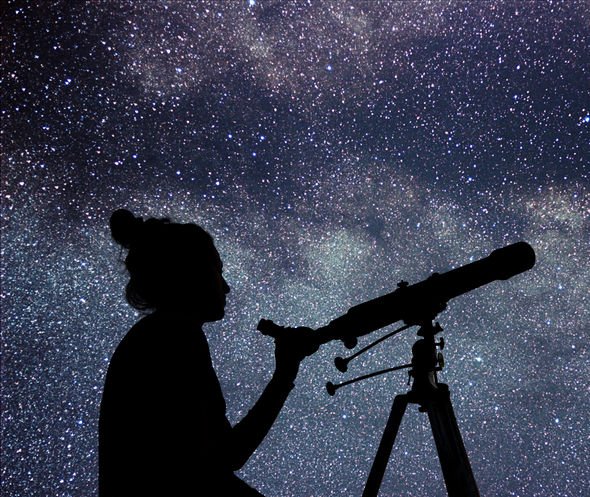
Astronomy: Orion is the perfect target for amateur astronomers (Image: GETTY)
If you find the brightest star in the night sky, Sirius, the Orion constellation will be up and to the right.
Depending on the time of the year, you can even draw a straight line from Sirius through the three stars in Orion’s Belt.
Above and to the right of Orion is the bright star Aldebaran in the constellation Taurus the Bull.
Online astronomy guide EarthSky said: “The very noticeable constellation Orion the Hunter rises before dawn at this time of year, recognisable for the short straight line of three stars that make up Orion’s Belt.
“And the sky’s brightest star Sirius – sometimes called the Dog Star because it’s part of the constellation Canis Major the Greater Dog – follows Orion into the sky as the predawn darkness gives way to dawn.”


